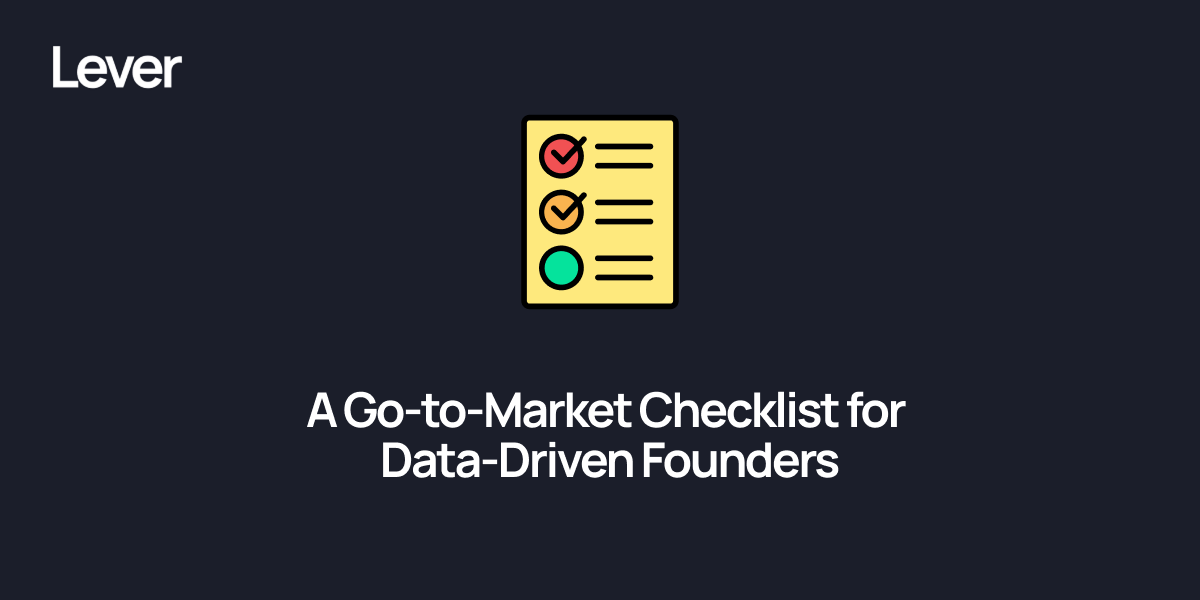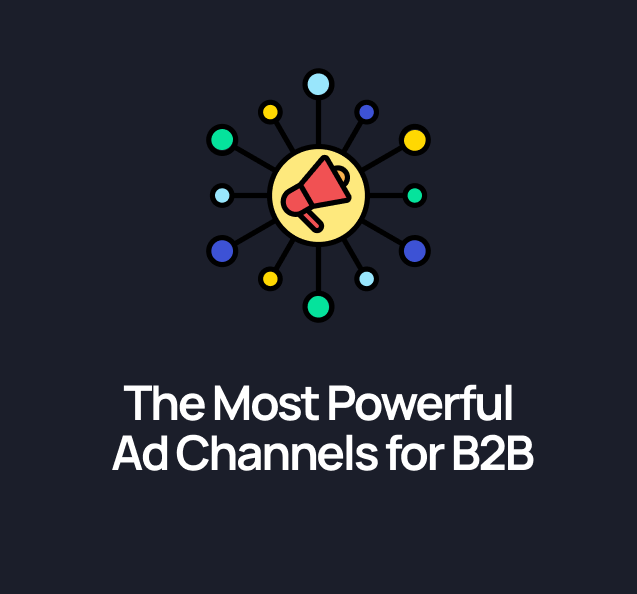If you're building something great but struggling to get it in front of the right people, you don’t have a product problem. You have a GTM problem.
And if you're a founder who loves dashboards, metrics, and customer data? Even better. A go-to-market strategy is just a data model waiting to be tested — one with far-reaching implications for marketing, sales, product, and growth.
This is your go-to-market marketing plan checklist. No jargon, no generic advice. Just the steps you actually need to launch with confidence (and traction).
Step 1: Clarify the Real Problem You Solve
Before you talk channels or budget, get uncomfortably clear on this:
- What is the high-stakes pain your product solves?
- Why now? (Is it new regulation, new behaviour, or a broken status quo?)
- Who feels that pain most acutely, and who owns the problem inside the business?
This helps you avoid “solution-first” messaging and gets you closer to problem-market fit.
Step 2: Define Your ICP by Observable Traits
Forget vague personas. Think filters:
- Firmographics: industry, size, funding stage, revenue
- Technographics: tools used (e.g. Salesforce, Stripe, HubSpot)
- Job roles: who owns the problem you're solving?
- Buying triggers: hiring a Head of Ops, switching CRMs, launching in the UK
The tighter your audience, the lower your CAC, especially for paid media.
Step 3: Design Your Entry Point
Not every ICP is ready to buy. So instead of leading with a product demo, lead with value:
- Webinars with original insight (not product walk-throughs)
- 1-pagers on solving niche industry challenges
- ROI calculators or interactive tools
- Paid social ads driving to high-intent landing pages with gated value
B2B buyers need a reason to engage that isn't "Book a demo."
Step 4: Prioritise Channels by Signal Strength
Paid vs organic isn’t the question. It’s: where can you test and learn the fastest?
- Google Search: high intent, low noise. Start here for bottom-of-funnel.
- LinkedIn Ads: for outbound demand capture (especially if targeting job titles)
- PR & Content: for building credibility and share of voice
- Partnerships: borrow trust and accelerate credibility
Tip: don’t treat content and ads as separate. Let your paid campaigns validate which messaging lands, then bake that into your content.
Step 5: Build Your Stack (But Keep It Light)
You don’t need an enterprise stack from day one. You need visibility:
- GA4 + Google Tag Manager
- LinkedIn and Google Ads properly connected to HubSpot/Salesforce
- Heatmaps or session recordings (e.g. Hotjar)
- Basic lead scoring or deal tracking
Track what matters: who’s engaging, who’s converting, and who’s moving down funnel.
Step 6: Create Feedback Loops with Sales and Customer Success
Your best source of GTM insight isn’t in your Google Ads dashboard. It’s in your sales calls and onboarding interviews.
- What objections are you hearing most often?
- Which industries are ghosting after demo?
- Are converted clients asking for different features than expected?
Marketing should feed this insight back into targeting, creative and messaging weekly.
Step 7: Budget for Iteration, Not Perfection
Founders often ask: "How much should I spend?"
Start small, but budget to learn:
- £3-5k/month across paid search + LinkedIn can give you real signal fast
- Prioritise 3–5 tests (messaging, audience, offer)
- Double down on what works, but don’t try to optimise a flat strategy
You’re not just buying leads. You’re buying learning.
Final Thought: GTM is a Motion, Not a Moment
The best go-to-market strategies aren’t locked in Notion. They’re dynamic. Evolving. Ruthlessly curious.
Founders who win are the ones who treat GTM as a constant cycle of:
- Hypothesis
- Test
- Learn
- Adjust
This is where data-driven founders thrive.
Need a GTM partner who can actually help you launch with traction?
We’re a specialist ppc agency building SaaS and fintech digital marketing strategies rooted in insight not hunches.

.svg)








.svg)
